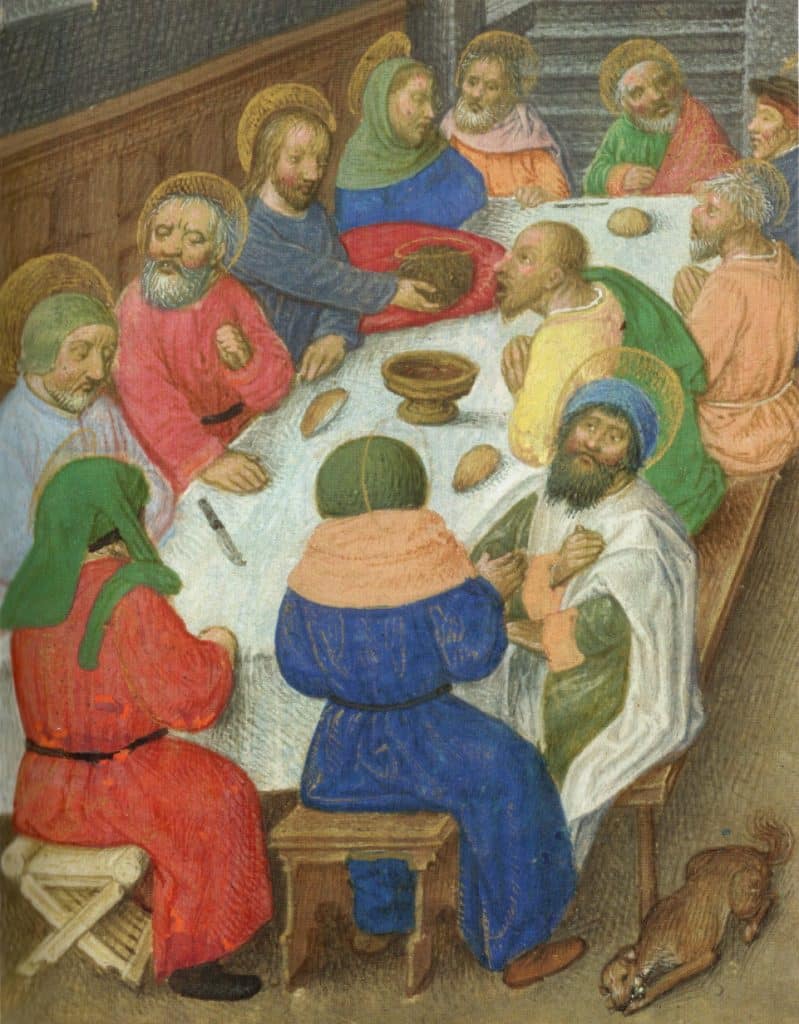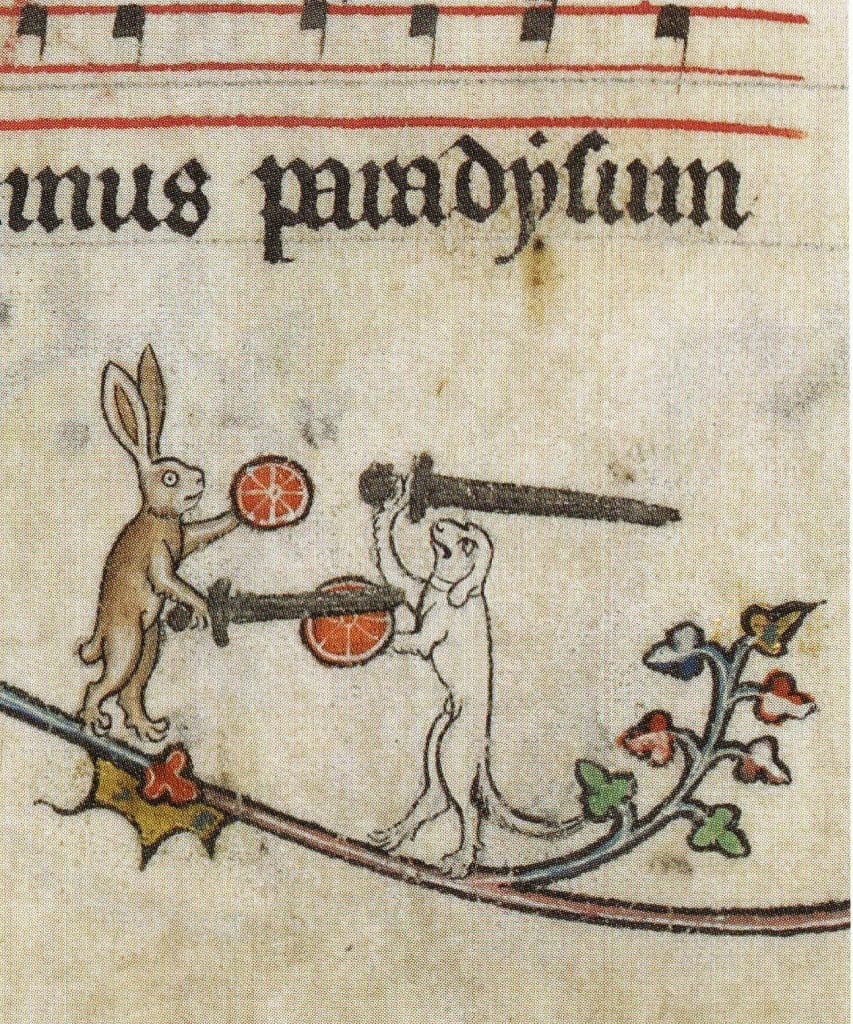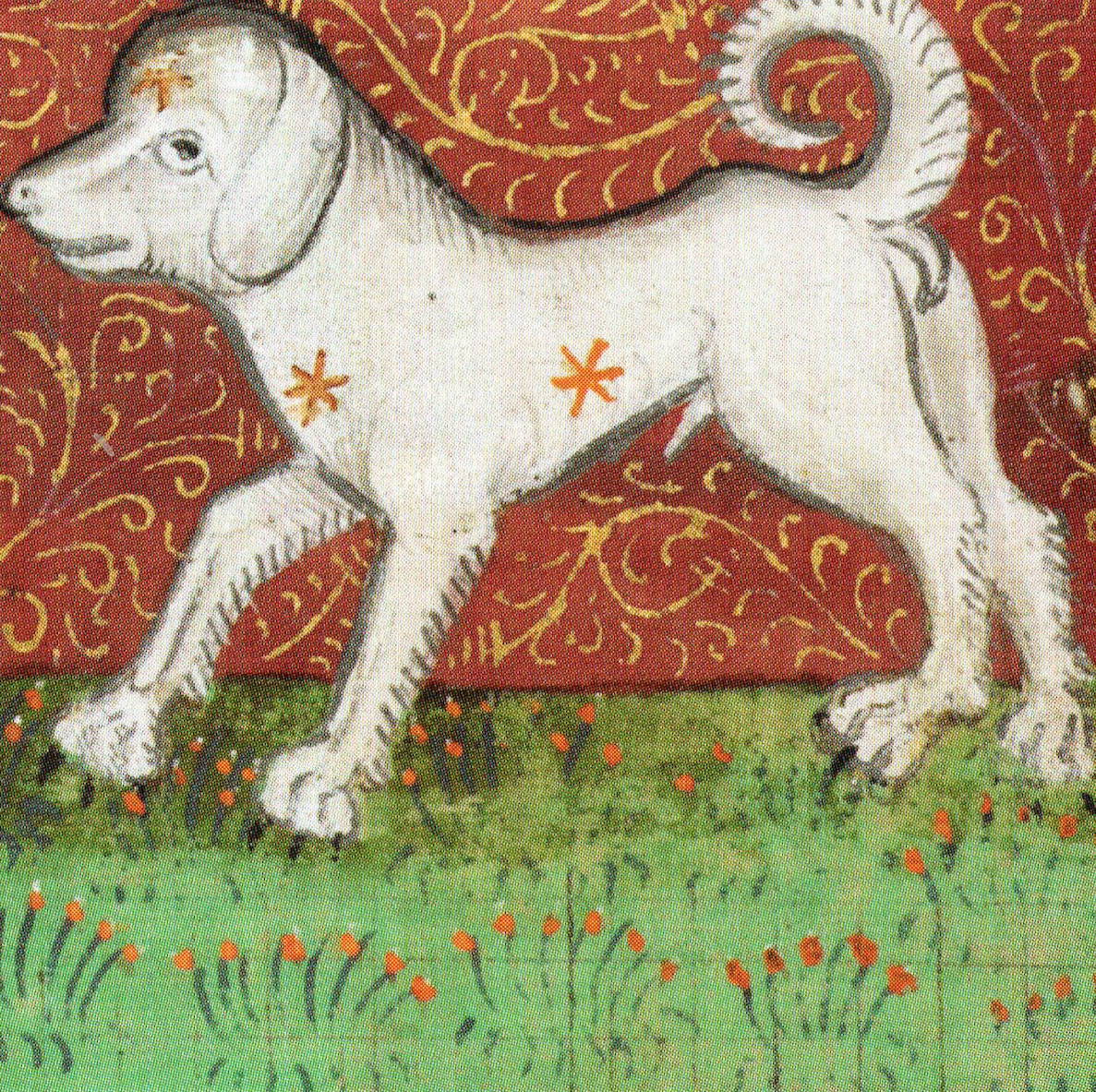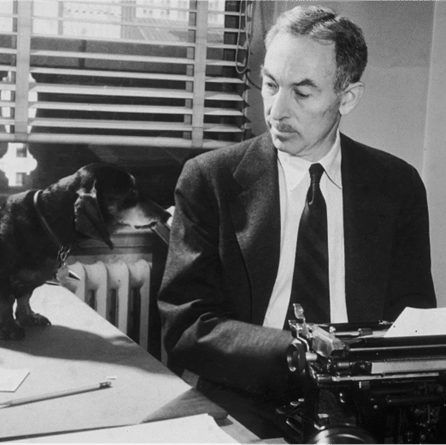We tend to think that domesticated dogs ate a more natural diet of raw meat, raw bones and table scraps from the time they began to live with humans. But for a brief period during the Middle Ages it became fashionable amongst smarter dog lovers to feed them a completely unnatural diet. We asked Dr. Kathleen Walker-Meikle, a Welcome Trust research fellow, and author of several books, including ‘The Dog Book: Dogs of Historical Distinction’ (Bloomsbury) and ‘Medieval Dogs’ (The British Library) to tell us about a Medieval Dog’s Dinner.
Some sophisticated medieval dog lovers disapproved of feeding raw meat and table scraps to their hounds. It was a period when many books were published on good manners and courtesy and these frequently decried the habit of letting dogs roam around under the table begging for food or even, if petite, standing on the table itself, although all admitted that it was difficult to keep them away.
The thirteenth-century Dominican Albertus Magnus claimed that the very worst sort of dog was the type that would pretend to be on guard but station themselves craftily near the ‘generous hand of the master’. Albertus had a great deal to say about canine care and recommended feeding a thin dog copious lashing of butter. He believed that lethargic hounds should be fed oat bread to pep them up.

Indeed, bread was the main staple for some medieval dogs. Accounts list panes pro canibus (bread for the dogs) in the accounts of wealthy households. Puppies would be first given a mixture of whey and milk, and be weaned on softened bread, before moving onto bread as their main meal. The bread was normally made with wheat although other grains, such as barley, might also be used. Porridge was also regularly on the menu, made from oats, bran, or barley, with the occasional addition of peas. Quantities per dog might vary, the dogs of Robert Mitford, Bishop of Chichester, were given at least two loaves of bread a day. The mid-fourteenth century accounts of John de Multon of Frampton, Lincoln, include an entry for both ‘my lady’s dog’, clearly a pet, and the household’s hunting hounds. The 1265 household roll of Eleanor de Montfort, Countess of Leicester, is packed with entries for all the household dogs, including the dogs of her sons Henry and Guy along with her own pet dogs, who in addition were treated to milk.
There is even a mention of feeding dogs bread in Geoffrey Chaucer’s The Canterbury Tales when the worldly Prioress is described as having not”
Of smale houndes hadde she that she fedde
With rosted flesh, or milk and wastel–breed
Wastel-bread, incidentally, was made of the finest flour available, so her dogs were eating bread rolls that normally only appeared on a rich man’s table. A Benedictine nun, the prioress was forbidden from eating meat by the rules of her order, but she clearly was cheerfully ignoring this, and treating them to steak and milk. Nuns and monks were great pet keepers, taking their dogs even into regular divine services, and ignoring the copious episcopal injunctions against the practice.

What of hunting hounds? They, too, would be fed bread daily in their kennels, and usually only eat meat at the end of a successful hunt. In his popular fourteenth century Book of the Chase, Gaston Fébus, Count of Foix, recommended that hounds only be rewarded in the field with the curée, after the quarry had been killed and ritually dismembered. The curée signalled the end of the hunt, and it was the moment when the hounds would feast on skin, blood, carcass pieces, and sliced intestines, all laid out on the skin of the slain beast, while hunting horns would continually sound.
Gaston Fébus warned against giving the hounds the meat of the curée later on in their kennels, as they might associate that location with tasty meat treats, and then would break off in the middle of the hunt to return home for food. If they were not keen on eating their usual bread diet in their kennels, Fébus suggested as a cure to give them finely cut up meat in broth or goat’s milk, but only in small portions. If sick, hunting hounds in the kennels might be given some offal or blood to restore their spirits. The French royal hunting accounts of 1398 detail payments such as ‘for eight sheep’s’ plucks from Jehan le Masqueur, butcher, to give to several disheartened hounds who will not eat bread’, ‘for four tripes brought in the market to give to several sick hounds’, and ‘To Le Magneur, butcher, for 8 pints of pig’s blood for strengthening the bean brother for the hounds’. When healthy, these hounds usually subsisted on a diet of wheat bread and salted bean broth.
Feeding your dogs was completely acceptable but stuffing them with food until they grew obese while at the same neglecting one’s charitable duties was criticised by ecclesiastical authorities. The stereotypical pet dog in medieval sermons was fat and spoiled. For the fourteenth-century Dominican preacher John Bromyard the situation was dire, with indulged pets refusing to eat anything but the best, with their owners only caring about their portly pet’s wellbeing and ignoring the famished poor:
The wealthy provide for their dogs more readily than for the poor, more abundantly and more delicately too; so that, where the poor are so famished that they would greedily devour bran-bread, dogs are squeamish at the sight of wafer-bread, and spurn what is offered to them, trampling it under their feet. They must be offered the daintiest flesh, the first and choicest produce of every dish. If glutted, they refuse it, then, as though they were infirm, there is a wailing over them.




